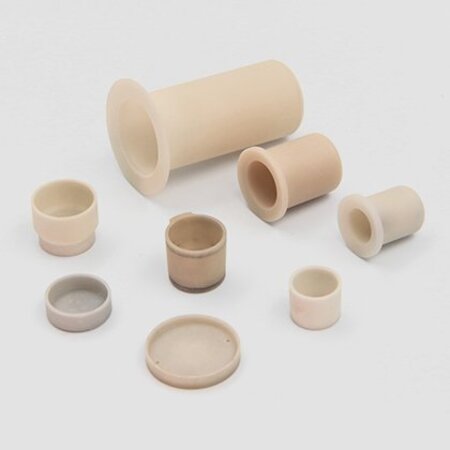In the GaN and GaAs semiconductor manufacturing industry, the handling, hardware, and logistics of the processes are expensive and delicate. Any process step, including crystal growth, requires optimization for purity and performance. The emerging technology of Aluminum Nitride (AIN) crucibles is optimal for thermal conductivity and chemical inertness for GaN and GaAs crystal production.
Why Select Aluminum Nitride Crucibles?
Outstanding Thermal Conductivity
Compared to quartz and graphite crucibles, aluminum nitride is superior at thermal conductivity, rated between 170 and 230 W/m·K. The importance of high thermal conductivity directly ensures:
Uniform temperature distribution during crystal growth
Reduced thermal gradients, minimizing dislocations and stress
Faster heat-up and cool-down cycles, increasing throughput
Superior Chemical Inertness
Contamination control is critical for semiconductor wafers. Aluminum Nitride Crucibles resist attack by molten Ga and As, ensuring:

Zero metal-carbon reactions, unlike graphite
Minimal oxygen release, unlike quartz at high temperatures
Extended service life, reducing downtime for crucible replacement
High-Temperature Stability
Withstanding temperatures up to 2100 ℃ in inert atmospheres, AlN crucibles support:
High-purity crystal growth at extreme temperatures
Processes like HVPE (Hydride Vapor Phase Epitaxy) and MOCVD (Metal–Organic Chemical Vapor Deposition)
Consistent batch-to-batch results for large-diameter wafers
Key Benefits for GaN and GaAs Production
Enhanced Crystal Quality
Reduced inclusion defects and micropipes
Improved electron mobility in HEMT and LED devices
Lower Contamination Levels
Ultra-low ionic and metallic impurities
Cleanroom-compatible manufacturing
Cost Efficiency
Longer crucible lifetime lowers per-batch cost
Higher yields due to fewer wafer rejects
Best Practices for Using Aluminum Nitride Crucibles
Pre-conditioning: Bake crucibles at 1600 ℃ under nitrogen to remove residual moisture.
Inert Atmosphere: Operate under high-purity nitrogen or argon to prevent nitride decomposition.
Scheduled Inspection: Look for cracks and other forms of surface pitting; in order to prevent contamination of the wafer, replace them after wear is evident.
Aluminum Nitride Crucibles are being used to sustain the ever-increasing need for high-performance semiconductors. Their exceptional chemical resistance, temperature stability, and thermal conductivity qualities make them Crucibles suitable for contemporary techniques of crystal growth for GaN and GaAs.
